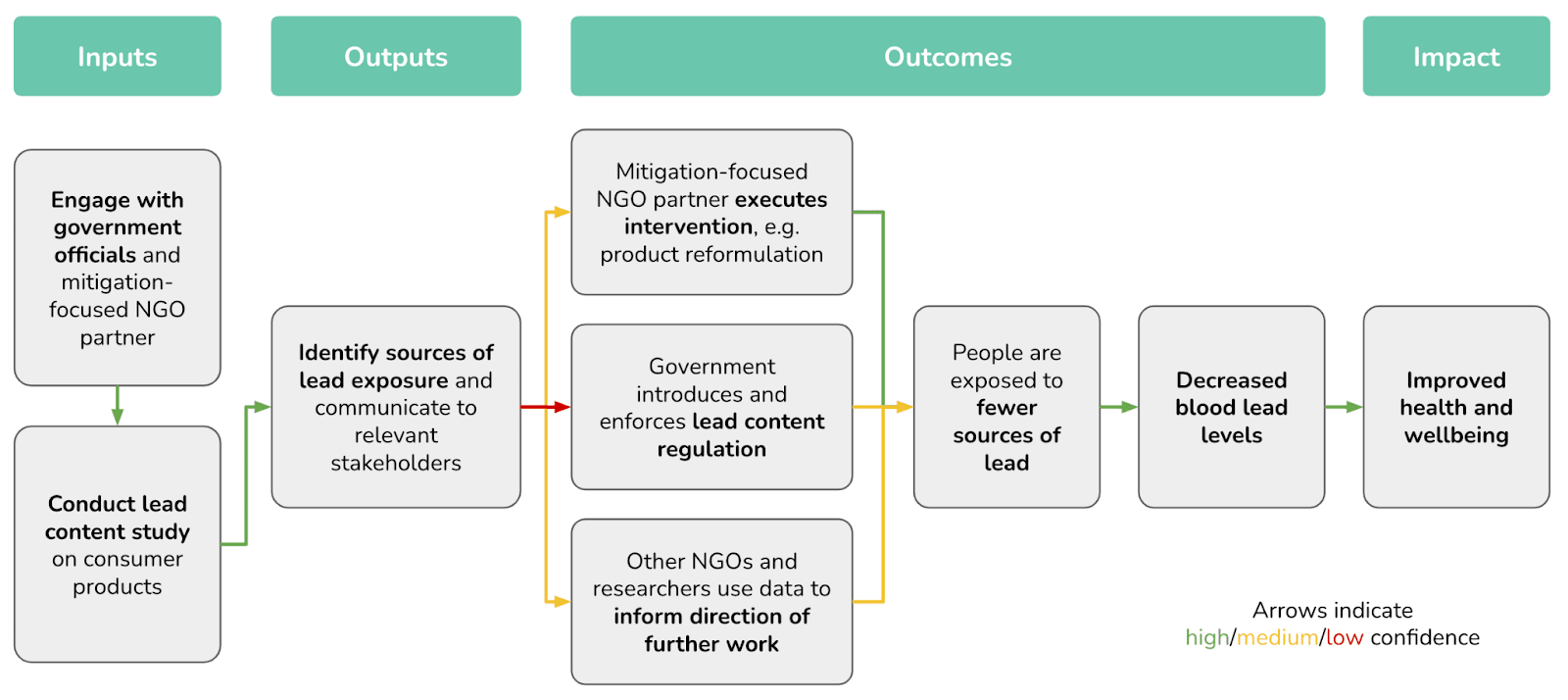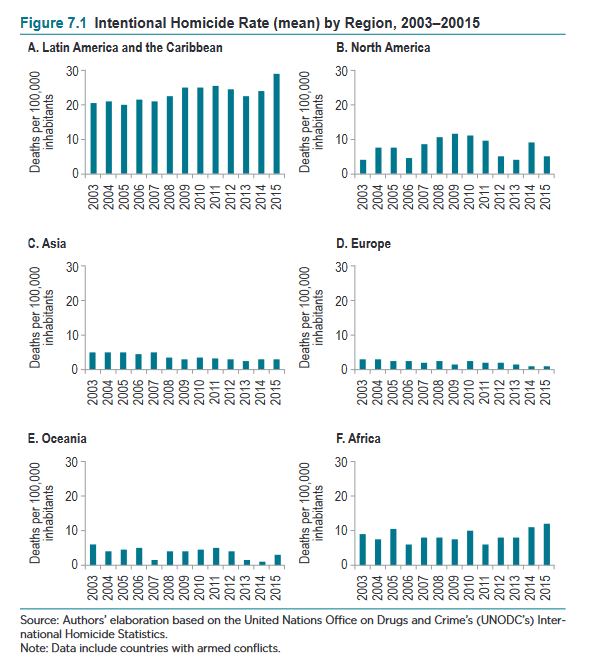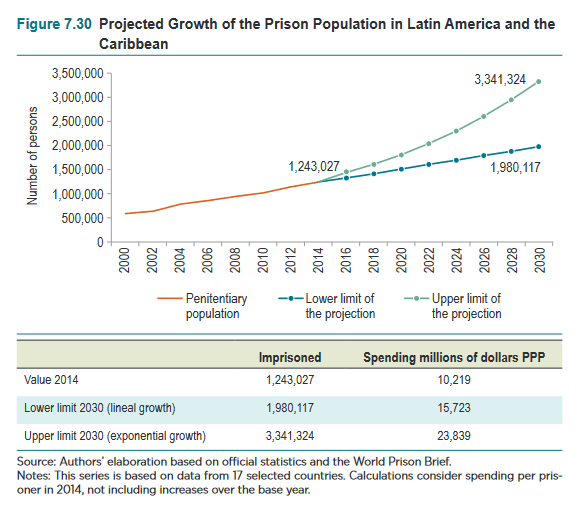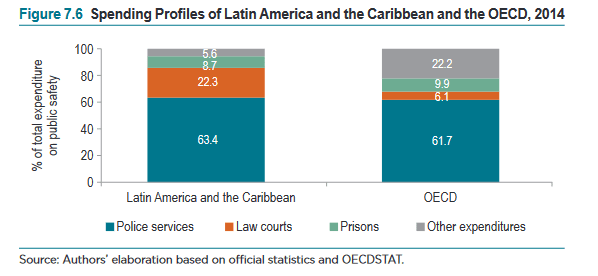Introducing four brand-new charities! Here's the fall cohort of the Charity Entrepreneurship Incubation Program.
By Ambitious Impact, Emma Stoks, Ben Williamson @ 2024-11-08T13:33 (+103)
We are excited to introduce four new charities launched through our August-October 2024 Charity Entrepreneurship Incubation Program! This round saw our biggest grant to date, totaling an impressive $264K! We extend our heartfelt gratitude to the generous donors from the Seed Network Funding Circle, whose support has played a crucial role in bringing these organizations to life. We also appreciate the mentors in our network and all the talented applicants for their hard work in making these charities a reality.
This article provides a brief introduction to our new organizations. If you want to support some charities with further funding or are interested in volunteer opportunities, you will find more information in the sections below. If launching a high-impact charity interests you, please visit our website and subscribe to our newsletter.
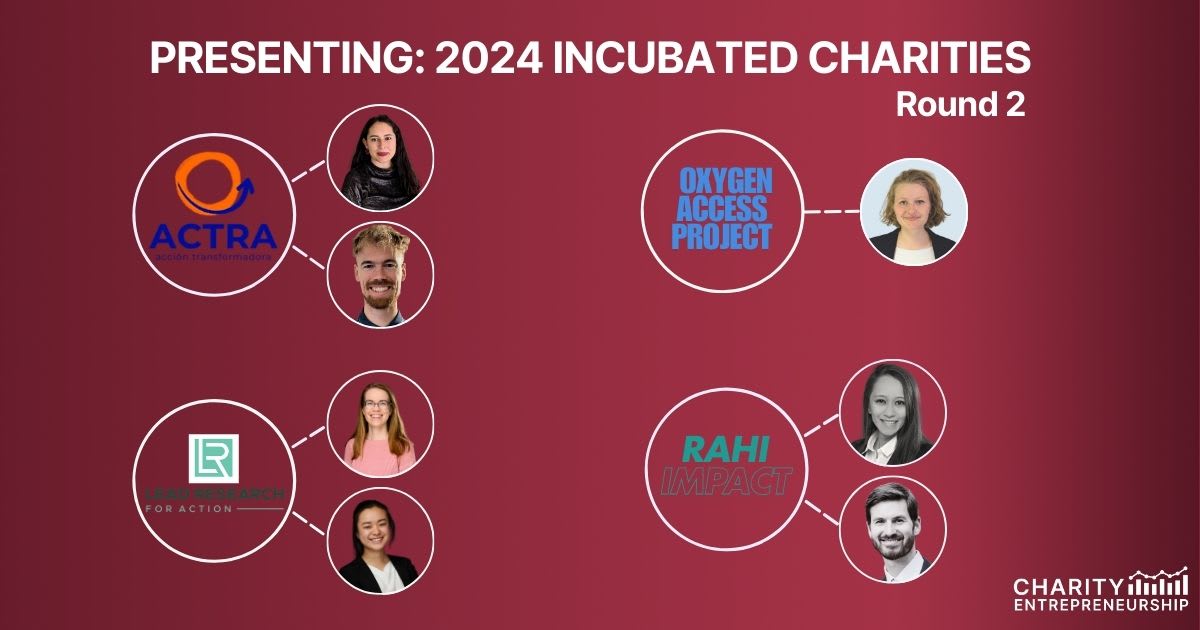
We are excited to introduce our 2024 Fall Cohort:
- ACTRA addresses crime in Latin America by implementing a community-based program of Cognitive Behavioural Therapy (CBT) to enhance safety.
- Rahi Impact focuses on improving labor migration processes to achieve better outcomes for migrant workers from South Asia to Gulf Cooperation Council (GCC) countries.
- Lead Research for Action (LeRA) researches lead exposure to safeguard more children from its harmful effects.
- Oxygen Access Project works to improve the supply of medical oxygen, ultimately saving children's lives.
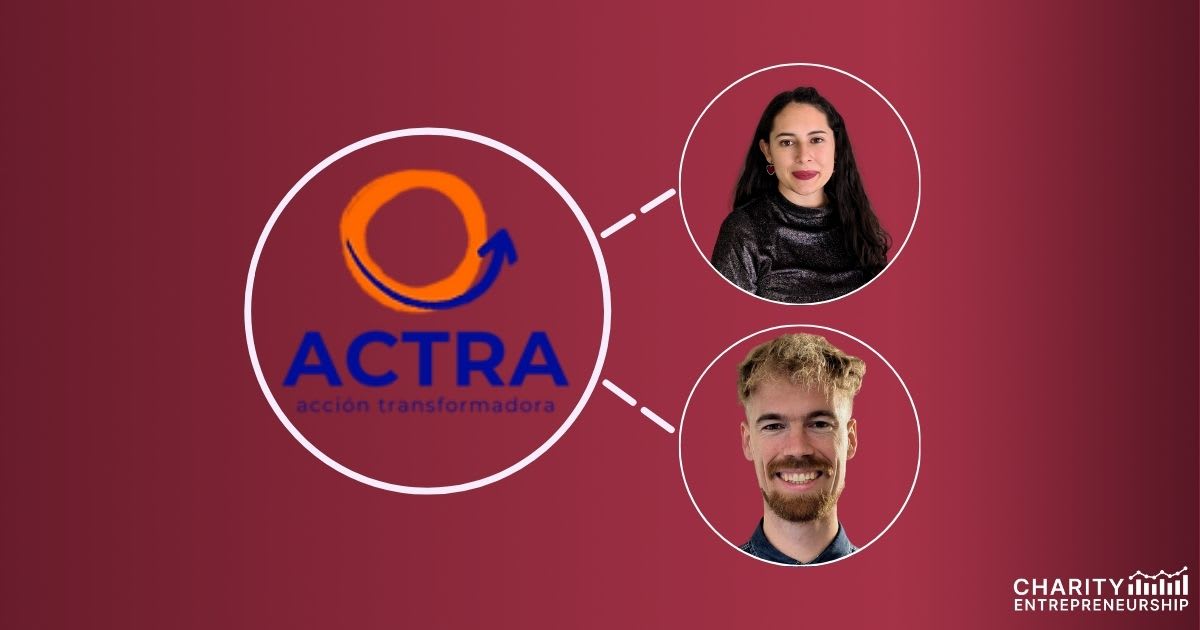
ACTRA
Co-founders: Laura Sofia Castro | Henning Peters
Website: https://www.actra.ngo/
Seed grant: $124,000
Background (why is this a problem worth solving?)
The Problem: Latin America has the highest crime rates in the world. In Colombia, the homicide rate is over four times the global average, with one in four people falling victim to crime yearly. Citizens in the region rate safety as their number one concern, even above unemployment.
The Gap: The “iron-fisted war on crime” is failing: in Colombia, incarceration shows weak deterrent or rehabilitative effects on property crime. Only 3 - 10% of government programs in the region are evidence-based. This misallocation highlights the urgent need to invest in proven, cost-effective solutions.
The Solution: Cognitive Behavioral Therapy (CBT) reliably prevents chronic offending by shifting identities and promoting thoughtful decision-making. CBT-informed approaches are estimated to be >7x more cost-effective than the next best solution.
Evidence: Over 50 high-quality randomized studies show CBT reduces criminal relapse by 25-50%, theft by 54%, and homicide arrests by 65%. One CBT program alone prevented ~300 crimes per participant over a decade at ~$2 per crime averted. The Inter-American Development Bank (IDB), and leading research organizations (J-PAL and IPA) all endorse CBT as highly promising, with IPA calling it a "best bet."
Near-term plans
Our mission is to implement and scale the most cost-effective solutions against violence and crime, starting in Colombia. As the first organization to scale CBT for at-risk populations across Latin America, we'll apply the principles of iterative learning to ensure our program's effectiveness and cultural fit.
In early 2025, we'll co-design an eight-week group therapy program with our target participants. Mid-2025, we'll pilot the full intervention to refine logistics, outreach, and engagement strategies. Following that, we'll conduct A/B tests and a pilot RCT to optimize scalability and cost-effectiveness. Each iteration will provide valuable insights, allowing us to adapt and improve until we're ready for a full-scale RCT, after which we'll focus on expanding our reach across the region.
Targets (estimated cost-effectiveness, one-year goals)
Cost-effectiveness at scale: Three different models we have tested converge in CBT-informed programs being 13x-29x more effective than direct cash transfers, delivering benefits in health (33%), economic gains (32%), wellbeing (29%), and business productivity (6%).
One-year goals: By the end of 2025, we aim to have co-designed our program with potential participants, hired and trained six facilitators, piloted the intervention, and built the implementation capacity to support further testing and refinement efforts. We plan to have served at least 200 participants during this period.
How you can support
We are seeking connections with crime experts in Colombia or Latin America or local organizations working with at-risk populations. Since we already have some connections, we kindly ask you to contact us before making any introductions to avoid duplicating efforts. Additionally, we are seeking funding to support research efforts that will enable us to conduct rigorous design and implementation studies as we iterate on our program, contributing valuable insights to the field.
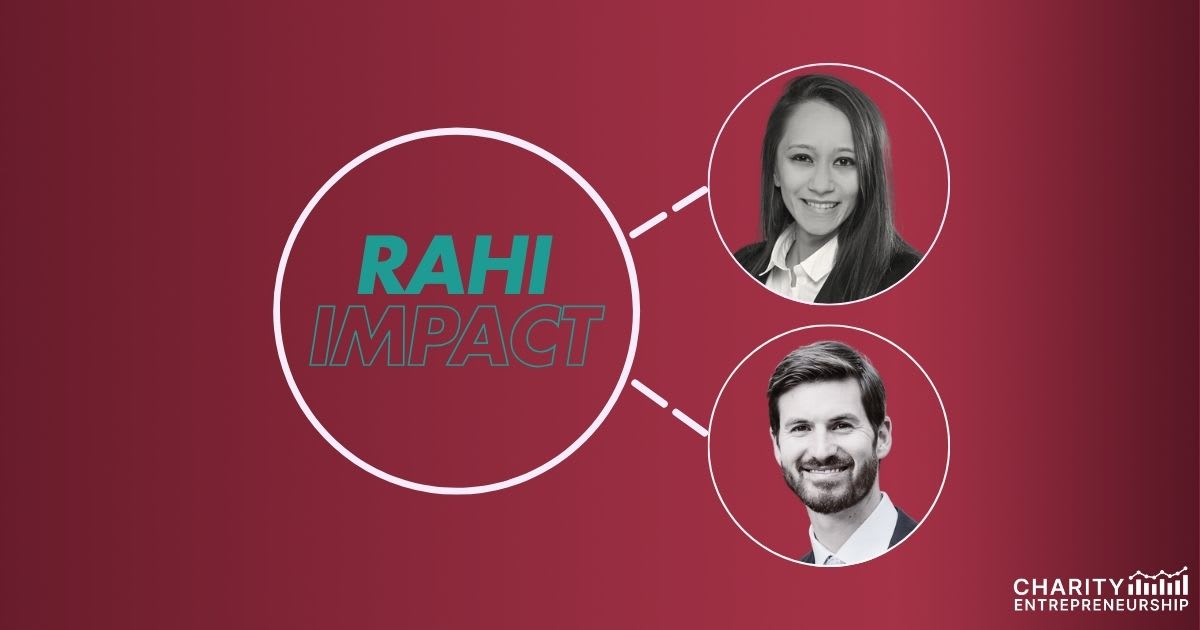
Rahi Impact
Co-founders: Anam Vadgama | Graham Tyler
Email: anam@rahiimpact.org | graham@rahiimpact.org
Website: TBD
Seed grant: $117,000
Background (why is this a problem worth solving?)
India, Nepal, Pakistan, and Bangladesh collectively send nearly 2.5 million workers abroad annually, primarily low- and mid-skilled workers migrating to Gulf Cooperation Council (GCC) countries on temporary contracts. Most migrants rely on networks of intermediaries to find job opportunities and navigate the migration process. Unfortunately, these intermediaries often charge exorbitant fees, exceeding $3,000 — equivalent to over 2.5 years of wages in the migrant’s home country — forcing many into debt. Fraudulent practices by some intermediaries drive a 28-34% migration failure rate, resulting in crippling financial losses.
Migrants lack access to reliable information, which perpetuates these challenges by leading to poor decisions and abuse. Even successful migrants face exploitation, particularly in GCC countries, where practices like passport withholding can trap workers in abusive conditions.
We envision a tech-first solution that reduces migration costs, failure rates, and safety risks for low- to mid-skill workers migrating from South Asia to GCC countries. Our scalable, cost-effective solution will provide critical information to support decision-making, connect users to vetted job opportunities, and provide personalized migration support.
Near-term plans
Our first-year goal is to deeply understand the end-to-end migration journey and identify automation opportunities. To gather insights, we’re currently prioritizing interviews with migrants, recruiters, employers, relevant NGOs, and experts. Anam recently visited Dubai to engage with these stakeholders firsthand. In January, we’ll conduct a scoping trip to our target migrant-sending country – either India or Bangladesh – to continue interviews and shadow potential migrants through the process. These learnings will guide the design of our pilot, which we expect to launch in May 2025.
Targets (estimated cost-effectiveness, one-year goals)
We plan to pilot direct migration assistance via WhatsApp and phone support, engaging ~300 low- to mid-skilled workers and facilitating ~45 successful migrations by October 2025. We expect to adjust these targets as we refine our intervention design through stakeholder interviews and scoping trips. This low-tech pilot will deepen our understanding of migrant needs and test different types of support, guiding the development of a scalable, cost-effective tech product in year two.
In the long term, our intervention is estimated to be 8 - 11x as cost-effective as direct cash transfers. Given that our intervention is relatively untested, we expect this estimate to evolve as we refine our design. We will also use this learning phase to critically evaluate our theory of change and pivot as required to maximize cost-effectiveness.
How you can support
We’re seeking introductions to employers of low- to mid-skilled migrant workers in the UAE, Saudi Arabia, and Qatar; recruitment agencies and manpower suppliers in India and Bangladesh; and NGOs working to improve labor migration for South Asian workers. We’re also seeking advisors with expertise in labor migration or experience building tech solutions for social impact in low- and middle-income countries (LMICs). Following our upcoming in-country visits in January and February, we’ll have a clearer sense of staff and volunteer needs.
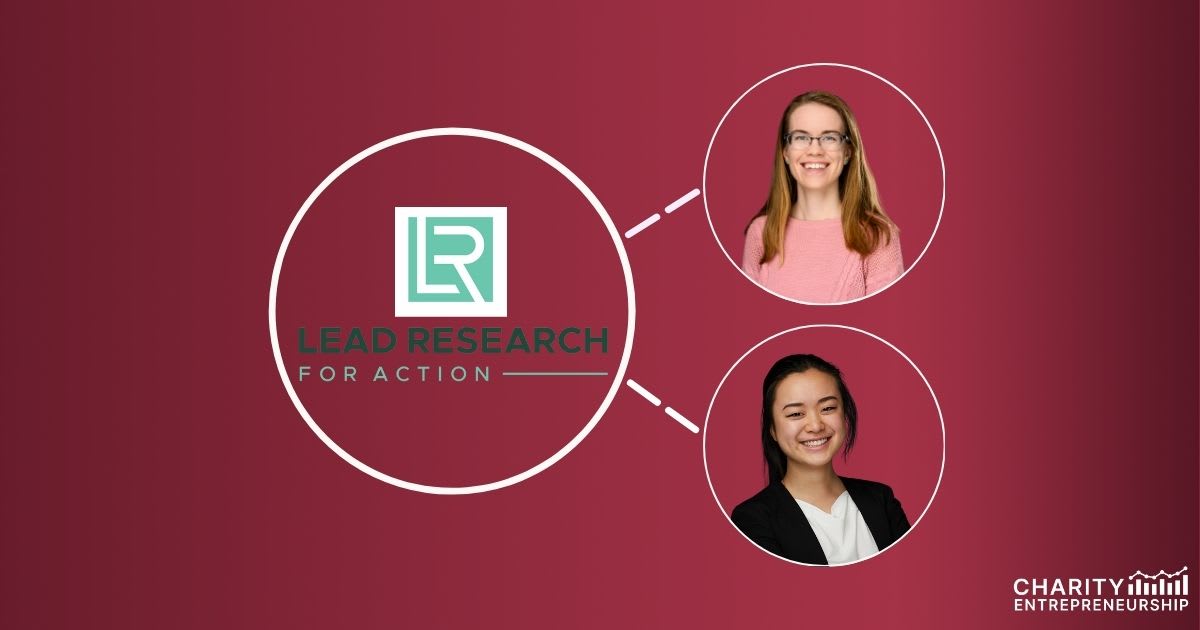
Lead Research for Action (LeRA)
Co-founders: Isabel Arjmand | Tammy Tan
Website: www.leadresearch.org
Seed grant: $264,000
Background (why is this a problem worth solving?)
Lead exposure is a neglected health crisis, impacting 1 in 3 children worldwide. The Global Burden of Disease estimates that lead exposure causes more deaths each year than malaria and HIV/AIDS combined, yet it receives less than 1% as much funding. In addition to causing 1.5 million deaths annually, lead exposure impairs cognitive development, reducing lifetime earnings and accounting for up to one-fifth of the learning gap between high- and low-income countries.
In most low- and middle-income countries (LMICs), we do not know what the main sources of lead exposure are. The list of likely culprits is long–metal cookware, cosmetics, spices, toys, paint, and more. Interest in eliminating lead has recently picked up, with over 25 countries signing onto the new Partnership for a Lead-Free Future. However, governments and NGOs cannot prioritize all possible sources of exposure. They need to know where to focus their attention, so studies to identify the primary sources of exposure in each country are needed.
Near-term plans
LeRA will conduct lead content studies on consumer products in LMICs to identify the main drivers of lead exposure in each country. We are also open to pursuing other types of research that target important knowledge gaps in lead exposure. Our work will enable the prioritization and elimination of major sources of lead exposure; we will provide decision-relevant data to governments and mitigation-focused NGOs to ensure regulation, reformulation, and enforcement.
Our work in each country will comprise three stages:
- Engaging with governments and NGO partners
- Conducting lead content studies to identify major sources of lead exposure
- Sharing our research findings with partners who then take forward projects to eliminate identified exposure sources
The steps involved in running the lead content studies themselves are:
Targets (estimated cost-effectiveness, one-year goals)
We model LeRA’s cost-effectiveness over five years at approximately $20 per DALY-equivalent averted. This estimate is sensitive to uncertain parameters, including the likelihood of successfully eliminating a major source of exposure for each study we conduct and the number of years by which we speed up elimination.
In our first year, we aim to work in two countries, identifying sources of exposure in each and collaborating with other NGO partners who are well-placed to work towards elimination of identified sources. Over our first five years, we aim to create a rigorous, replicable playbook for conducting studies to identify lead exposure sources and to conduct these studies ourselves in twenty countries.
How you can support
Please get in touch by emailing us at hello@leadresearch.org.
Advice
As we launch LeRA, we aim to learn as much as possible. We would love to hear from people with experience in areas like conducting decision-relevant research that informs government action, especially in Africa, working in environmental health, or starting and scaling nonprofit organizations.
Funding
We’re very grateful that Ambitious Impact’s network of seed funders has provided funding for our first year of operations. If our initial work is promising, we expect to seek funding for our second year in the first half of 2025. We’d love to connect with potential funders interested in learning more.
Staying in touch
We plan to create a newsletter. If you’d like to keep up with our work as it progresses, please sign up here!

Oxygen Access Project
Co-founders: Leonie Falk
Website: Under development
Seed grant: $142,000
Background (why is this a problem worth solving?)
Every year, 7 million children in low and middle-income countries are admitted to hospitals in need of medical oxygen therapy for pneumonia alone. In most low-income contexts, 4 out of 5 of those children will not receive the oxygen they need.
Near-term plans
We will spend the first few months scoping out potential locations for a pilot program. Nigeria, India, and Pakistan scored high on our geographic analysis. We plan to conduct one of these country visits before the end of the year.
In the first year, we plan to improve access to medical oxygen in 4-8 hospitals with the capacity to provide oxygen to 4,500 children. With this pilot program, we aim to avert 30 deaths.
Targets (estimated cost-effectiveness, one-year goals)
Our estimated cost-effectiveness predicts that this intervention will avert one DALY for $40-$70 and save a child's life for $2500. Our charity aims to avert the death of 30 children within its first year and 5000 over the next five years.
We are particularly excited about the strong evidence base for this intervention and hope to replicate the results found in previous projects in underserved locations.
How you can support
We would be grateful for any introductions to existing organizations in the oxygen access space.
Larks @ 2024-11-09T03:56 (+46)
Thanks for sharing this, I applaud you for working on the issue of crime, which I think has been under-studied by EAs, despite Sam's excellent post.
I'm curious about this claim:
The “iron-fisted war on crime” is failing.
I don't know exactly what counts as "iron-fisted", especially as few Latin American countries sentence criminals to death, but if anything does it surely covers President Bukele's crackdown in El Salvador, where they basically just imprisoned everyone with gang tattoos. My impression is that even unsympathetic observers agree it has dramatically reduced the crime rate - see for example the wikipedia section here. When the NYT investigated, they found that even the mothers of guys who were arrested agreed the policy reduced crime:
One of them was Morena Guadalupe de Sandoval’s son, whom she says she has not seen or spoken to since he was arrested on his way home from work in the capital about a year ago. She says the authorities have accused him of being part of a criminal group, something she denies. ... Ms. de Sandoval says the crackdown has made things better in her neighborhood, an area called the Italian District that was once dominated by MS-13. She doesn’t see young men smoking marijuana on the corners anymore, she said.
“It’s safer,” she said. “In that way, it’s a good thing.”
In another document you link to this article, but doesn't really argue that the Bukele's crackdown has failed... just that other countries, with less extreme policies, have struggled, and that they might have to release the prisoners eventually, and to this one, which simply ignores the incapacitation effect.
The intervention you are investigating could still be worthwhile and productive, I'm just not sure exactly why you are casting aspersions on alternatives.
David T @ 2024-11-10T15:38 (+1)
The incapacitation effect incurs the costs of full time incarceration: in El Salvador over 2% of the working age population.
It's hardly surprising a charity focusing on cost effective interventions which (rightly or wrongly) claims other interventions can cost as little as $2 per crime averted doesn't consider this the benchmark for success
Larks @ 2024-11-10T18:17 (+4)
Sure, I'm not saying their org should directly try to incarcerate people, or that their policy mightn't be good impact/$, but they chose to comment on the prison approach. If their objection was purely cost then surely they would say "the iron-fisted war on crime, while effective at reducing crime, is very expensive". What they wrote makes it sound like they don't think it can achieve any significant progress on crime.
Henning Peters @ 2024-11-11T12:45 (+3)
Hi Larks,
Thank you for raising this important topic.
Our assertion that punitive approaches in Latin America are failing is based largely on evidence from the following report: Link to report: Smart Spending on Citizen Security.
When we used the phrase "iron-fisted war on crime", our intent was not to critique any single policy, such as the Salvadoran Gang Crackdown. While I have some initial personal views, I don’t consider myself an expert on this particular approach’s potential effectiveness, possible adaptations, or the ethical considerations it raises.
Instead, our focus is on broader trends observed across Latin America, and the conclusions we’ve drawn from them. I acknowledge that “iron-fisted war on crime” may have been misleading, and we’re considering adjusting our language in future discussions. Here are the key trends we meant to address:
- Increasing violence rates: Even during periods of economic growth and heightened security measures, violence has continued to rise in Latin America.
Conclusion: Past approaches have generally failed to deliver sustainable safety improvements. - High incarceration rates: There’s been a significant increase in prison populations, leading to substantial government spending and economic losses both for the incarcerated individuals and for society overall.
Conclusion: Simply incarcerating more people is not a sustainable solution. - Disproportionate spending on law enforcement and courts: Compared to OECD countries, Latin America allocates relatively high budgets to judicial and punitive measures, with less investment in preventative approaches (e.g., CBT programs to reduce criminal behavior). Note: "Other expenditures " includes spending on crime prevention.
Conclusion: Latin American policies seem to diverge markedly from those of other countries, particularly in prioritizing punitive over preventive strategies.
The report further elaborates on the drawbacks of extensive incarceration policies. For instance, in many Latin American countries, minor drug offenders (such as those charged with drug consumption) are often incarcerated. Research shows that imprisoning low-risk individuals like drug users can increase their likelihood of committing serious crimes in the future—likely due to exposure to more serious offenders and the stigma of having been imprisoned. While incarceration may help reduce future crime for medium- to high-risk populations, it has little impact on those who were low-risk to begin with. Therefore, our critique is not aimed at imprisonment itself, but rather at poorly targeted incarceration practices.
We are not opposed to all punitive approaches and believe that targeted, evidence-based strategies—such as hot-spot policing, to name a non-CBT approach—should be prioritized.
Lastly, a brief disclaimer: The report cited is several years old. We’ve cross-checked some of its data to confirm that certain trends are still current, but not all data points have been updated.
Warm regards,
Henning
Co-founder of ACTRA
Larks @ 2024-11-12T02:47 (+8)
Thanks for your response.
I reviewed the source document you linked previously, but I didn't really find much evidence for the claim (that 'the "iron-fisted war on crime" is failing') in it, and reviewed it again just now. Is there a particular section you mean to point towards? I realize the source asserts this claim, but it doesn't seem to actually argue for it.
I'm also curious as to why you are using such old data? Government statistics are often slow, but your charts are literally almost a decade old. For example, you claim, based on the homicide data up to 2015, that
Even during periods of economic growth and heightened security measures, violence has continued to rise in Latin America.
Conclusion: Past approaches have generally failed to deliver sustainable safety improvements.
But if we consult OWID, we see that there are six more years of data you excluded from your chart, and it shows the opposite pattern: violence has been falling.
If your argument was valid - that rising violence proves past approaches were bad - then this more recent data would suggest we should draw the opposite conclusion, and update in favour of existing approaches. (I don't think we should infer this, because I think the argument is invalid anyway).
I think omitting this later data makes a pretty big difference, because you made a claim in the present tense - that the iron fist approach is failing - which suggests you should be basing this on evidence about current iron fist approaches. The El Salvador crackdown is the most famous and most iron fist approach around right now (most of these countries don't even have capital punishment!), so I don't think you can ignore it.
You also claim that prison spending is unsustainable, based on a forecast for 16bn-24bn of 2024 dollars spend on prisons:
High incarceration rates: There’s been a significant increase in prison populations, leading to substantial government spending and economic losses both for the incarcerated individuals and for society overall.
Conclusion: Simply incarcerating more people is not a sustainable solution.
But Latin American + Caribbean GDP for 2014 was 5.4 trillion, so even at the upper end this is only 0.4%. You're right that government spending can't grow as a share of GDP forever, but I don't see much reason to think this is the limit.
LauraSofia @ 2024-11-14T01:11 (+1)
Hi Larks,
Thank you for such an engaged response.
You’re absolutely right that our original statement, “the iron-fisted war on crime is failing,” was broad and, admittedly, more geared toward emphasizing the challenges than making a definitive, across-the-board claim. We recognize that this phrase, chosen to convey the intensity of the issue, may have come across as too sweeping—especially given that we are not experts on every country’s policies, including El Salvador’s current crackdown. Instead, our intent was to highlight the broader limitations of heavy punitive measures in sustainably reducing crime across Latin America, not to imply that every such approach in every context has failed or will fail.
Our assertion rests on several general concerns about incarceration’s long-term impact:
- Questionable Reach in Preventing All Types of Crime: Incarceration can undoubtedly remove individuals from public spaces, reducing immediate crime in communities. However, we are uncertain to what extent all forms of crime are effectively deterred by this approach. In Colombia, for instance, we see evidence of persistent criminal activities, such as scam operations, conducted from within prison walls. This suggests that certain forms of crime may not be fully curbed by incarceration alone, pointing to potential gaps in reach.
- Mixed Rehabilitation and Recidivism Outcomes: Some evidence suggests that incarceration does not always deter future criminal behavior and, in some cases, can reinforce it. In fact, recidivism rates have been growing every year in Colombia. Recidivism rates raise questions about the extent to which imprisonment fosters long-term change. There are also cases where people learn new criminal tactics while incarcerated, potentially intensifying criminal behavior post-release (same source as above). This suggests that while incarceration may reduce crime through incapacitation, it may not do so after people are released.
- Permanent Incarceration as an Unethical Solution: One could argue for indefinite incarceration to prevent further crime through incapacitation. However, even if financially and logistically feasible, permanent imprisonment raises serious human rights concerns. Programs like cognitive behavioral therapy (CBT) demonstrate that people are not irredeemable and can change when given support to adopt more pro-social behaviors. Removing people’s freedom indefinitely when this is a possibility seems unfair. The opportunity cost of maintaining a large incarcerated population and of removing them from the workforce also warrants consideration; these resources could yield greater benefits if redirected to preventive or rehabilitative programs.
Our goal with ACTRA is to explore this complementary, rehabilitative approach, rather than to assert that punitive measures do not have any effect at all. We’ll work to convey these subtleties more clearly in future communications. Thanks again for raising these points.
defun 🔸 @ 2024-11-09T19:25 (+17)
Rahi Impact ... we expect to launch in May 2025.
Have you considering launching asap (eg. next month)?
I could be wrong, but Rahi Impact seems quite similar to a tech startup, and one of the best pieces of advice for most startups is to launch as soon as possible.
Karthik Tadepalli @ 2024-11-09T01:33 (+7)
This looks like an exceptionally promising list of charities. Good luck to all the founders!
Toby Tremlett🔹 @ 2024-11-08T15:47 (+7)
Congrats! I know these charities are likely to be extremely busy at the moment, but if they have time to spare, I'd encourage them to:
1- Write a comment (on the marginal funding thread which will be up from Monday) or a post for Marginal Funding Week next week (even a late submission is valuable).
2- Message me about taking part in the Donation Election (if they are registered charities already).
Denis @ 2024-11-14T18:47 (+1)
@Leonie Falk I'm not clear if this is what you're looking for, but ... during Covid, there was obviously a lot of need for oxygen solutions, and one result of this is a lot of great work, mostly open-source in optimal design of oxygen concentrators.
At least one group in the U. of Cambridge set up with the view to optimising the supply and distribution of oxygen concentrators in developing countries, mainly in Africa. I was involved only at the start of the project, so I don't have the latest status. Part of the team was located in Kenya (?). The vision was to mass-produce these in Kenya. There are regions there with very suitable zeolite rocks, which (in an oxygen concentrator) are used to adsorb Nitrogen from a stream of air, so that the stream coming out is very rich in Oxygen, up to 95% or in some cases even 99%.
The reason this is interesting is that oxygen concentrators are relatively low-tech, and while they need electricity, they do not need to be refilled with oxygen. They also avoid many of the safety issues related to handling oxygen containers, which work great in London hospitals but maybe not in small, rural clinics with no experts present.
You probably know all this, but if not, definitely feel free to ask me more about the technology of oxygen concentrators. The point you might not know is about the project run with Cambridge, which is just a 40-minute train journey from London. I'd be happy to introduce you to Professor David Fairen-Jimenez, who is a global expert on adsorption technologies and was a colleague of mine for several years.
Congratulations on founding this amazing charity! When we worked on this, one thing I recall was all the people saying "Even without Covid, there is a massive need for oxygen!" It's brilliant that you're helping to address that!
SummaryBot @ 2024-11-08T14:58 (+1)
Executive summary: Charity Entrepreneurship has launched four new high-impact charities focused on reducing crime in Latin America, improving labor migration from South Asia, researching lead exposure, and increasing access to medical oxygen in low-income countries.
Key points:
- ACTRA aims to implement cognitive behavioral therapy to reduce crime in Latin America, with an estimated 13-29x cost-effectiveness compared to cash transfers.
- Rahi Impact seeks to improve labor migration processes from South Asia to Gulf countries, targeting a 8-11x cost-effectiveness versus cash transfers.
- Lead Research for Action (LeRA) will conduct studies to identify major sources of lead exposure in low and middle-income countries, estimating $20 per DALY-equivalent averted.
- Oxygen Access Project plans to improve medical oxygen access in 4-8 hospitals, aiming to avert 30 child deaths in its first year at $2500 per life saved.
- All four charities are seeking connections, advice, and potential funding to support their initial operations and research.
- The total seed funding for these charities amounts to $264,000, provided by the Seed Network Funding Circle.
This comment was auto-generated by the EA Forum Team. Feel free to point out issues with this summary by replying to the comment, and contact us if you have feedback.
